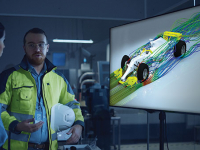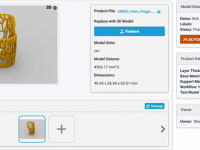
March 26, 2020
Founded in 2014 in Denver, Colorado, Boom Supersonic is redefining what it means to fly by building Overture, history’s fastest commercial airliner.
Overture will travel at a speed of Mach 2.2 and a cruising altitude of up to 60,000 feet.
The Fastest Airliner in History
With pre-orders and options for 30 Overture airliners from Japan Airlines and Virgin Group already booked, the race is on to design the next generation supersonic plane. Besides the challenges that supersonic flight inherently imposes, Boom’s Overture designers also need to consider important environmental and social factors. The UN’s CORSIA climate agreement of carbon-neutral growth requires the offset of all international aviation emissions, whether subsonic or supersonic.
To support this, Boom Supersonic plans to accommodate drop-in sustainable alternative fuels that will reduce their carbon footprint by roughly 80% and is actively looking at ways to incorporate environmentally minded innovations into Overture's design, without causing technical risk to their development timeline. One such innovation is its partnership with Prometheus Fuels, a company using clean energy to make zero-net carbon fuels out of carbon dioxide that is already in the atmosphere.
Mitigating the community's exposure to the noise of sonic booms is another priority. They will do this by limiting supersonic speeds solely to trans-oceanic flight segments and implementing the latest noise-reducing technologies to ensure no increase of existing noise contours during take-off and landing.
Addressing the Challenges
Due to the complexity of designing for supersonic speeds, Boom Supersonic engineers need to be able to test multiple conditions and try out many different design ideas. They also work with a very short time to concept, which means they need a solution that is fast to set up and even faster to get results.
In a pilot program with NUMECA, Boom managed to achieve results up to 14 times faster than with their previous design environment, according to Tim Conners, Lead Propulsion Engineer at Boom Supersonic. NUMECA solutions have not only advanced the development of the XB-1 subscale demonstrator by providing a dramatically streamlined and highly automated workflow, but the NUMECA partnership has given Boom the opportunity for significant savings in computational resources and a reduction in design cycle time.
Fill out the information below to download the resource.
Latest News







